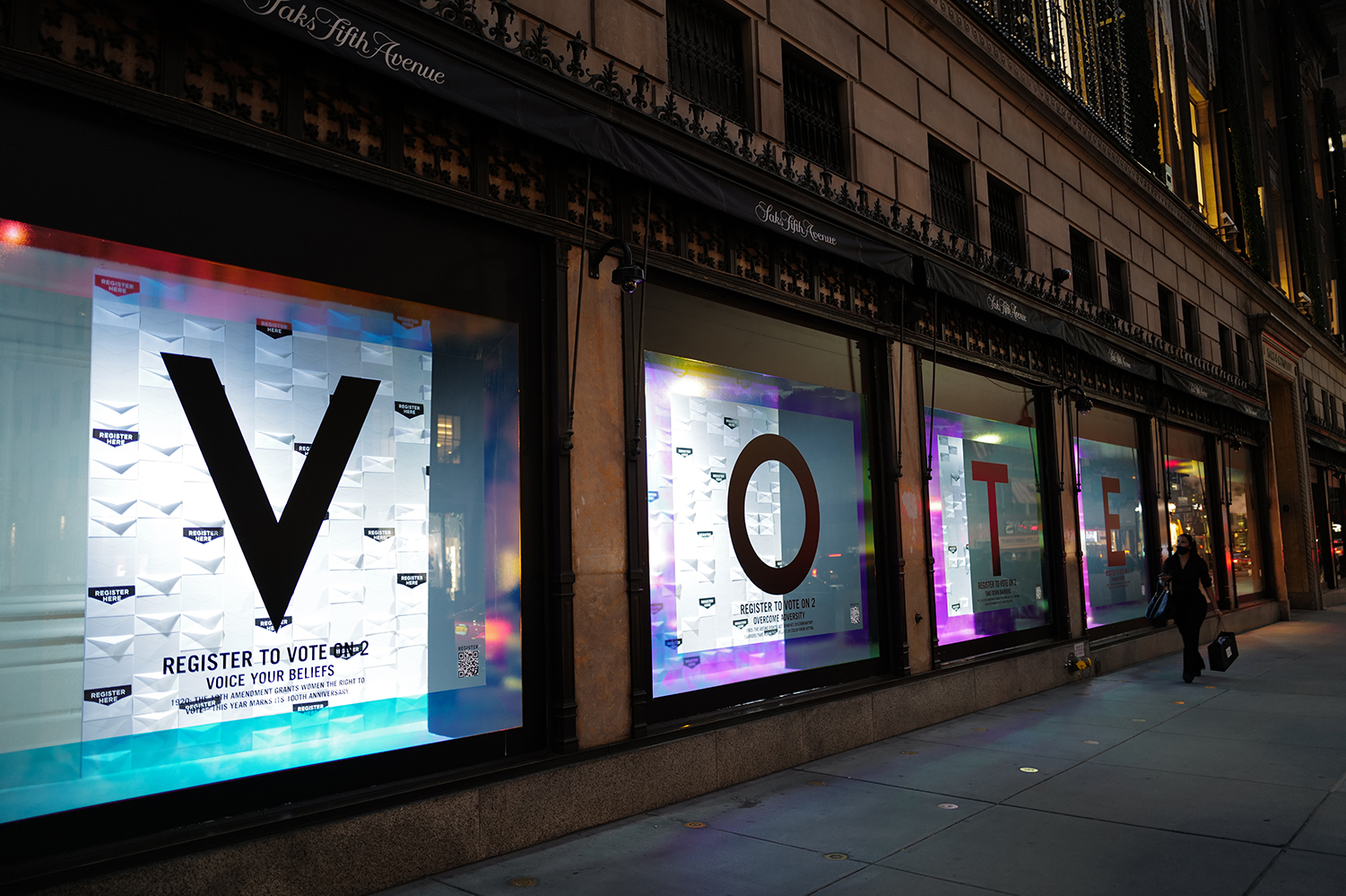Fashion is a tool. In the case of voting-themed merchandise, garb, and paraphernalia, it’s a tool intended to ignite civic participation. Brands and retailers are leaning into this opportunity like never seen before, while consumers are spending what appears to be a lot of money on apparel and accessories bedecked with a graphic “vote” as the centerpiece.
Over the past few weeks, this aesthetic statement has proliferated websites and social media corners, all leading up to November 3. A record voter turnout has resulted in over 144 million votes tabulated. In the act of expression and what initially felt like grassroots marketing, many now-familiar images appear across scrolling feeds in the hopes of driving awareness, interest, and encouraging others in their networks (or followers) the critical importance of voting. You’ve probably partaken in it as I have.
It’s materialized in many forms. The selfie while wearing a graphic tee with the letters V-O-T-E emblazoned across the chest, to jewelry adorning our bodies. There’s even an explicit baseball cap that went viral, thanks to Diane Keaton, as well as a sea of celebrities donning pink suiting that washed over Instagram feeds. Plus, the badges we filter into our stories. And, most notably, in this election season, on the screen-printed masks protecting our faces from a virus that’s deeply a part of our reasoning to go out and put our constitutional right to work by casting our ballots.
But why this year, has there been a noticeably sizeable increase in all of this voting stuff? And, more importantly, what will happen to it all now that the election is over?
For one, voting is crucial this year in response to the fact that our country is polarized and divisive. Yet, the symbolism expressed in us wearing vote on our sleeves created community across party lines. Wearing this mark of democracy lets each of us participate at any level. It all happened faster than fast fashion.
Putting the words “vote” out there for everyone to see on your person presumably acts as a constant, explicit reminder to simply do it. This surmounting movement underscores voting’s importance by literally leveraging our bodies as billboards to broadcast a message rooted in giving a damn about what matters now and in the future. And it’s being levied through artistic expression, in turn as a form of political activism and our freedom to express that we, as Americans, have the right to thanks to our government.
But when it comes to consumption, I urge you to consider what you’ll do with your election ensembles. Among the laundry list of issues we vote on in our society, sustainability emerges as a talking point related to caring for our planet. Fashion happens to be one of the guilty culprits in part to hold accountable. The proliferation of waste that’s contributed comes from textiles and fibers unable to breakdown, entrenching the planet in non-biodegradable landfills, including much of your “vote” regalia.
For parts of the sum, it’s hard not to see this as another flash in the pan moment that the fashion industry has exploited for both capital gains and bona fide human interest. Is it actually moving the needle? Marketing works. Good marketing really works, but is the increase in producing and selling these goods signaling a moment of growth for voter turnout, or is it benefitting the apparel companies and brands selling the t-shirts, sweaters, hats, pins, sweatpants, masks, boots, bags, and god knows what else?
Self-expression through our fashion choices is both form and function, one such that transcends even this moment. In the case of voting, if fashion rallies a single first-time voter to feel as though their vote matters and they take action, then it’s a tool that works. And while it’s swell to witness merchants and brands engage their customers toward action to buy in a year that has resulted in catastrophic hits to the retail industry; this is an opportunity many of them have capitalized on.
Plenty of these companies state that they pass along a percentage of proceeds from the sale to various non-partisan and voter registration organizations, but could you, instead, donate directly to your cause of choice or even to a candidate’s election campaign? Perhaps you did both, or you were inspired to buy, in turn, to support a business, express yourself, and contribute all in one. There’s no wrong answer. The brands aren’t wrong, nor are you for participating in consumerism and democracy.
Regardless, will you wear your V-O-T-E mask again tomorrow, now that the election is over?


